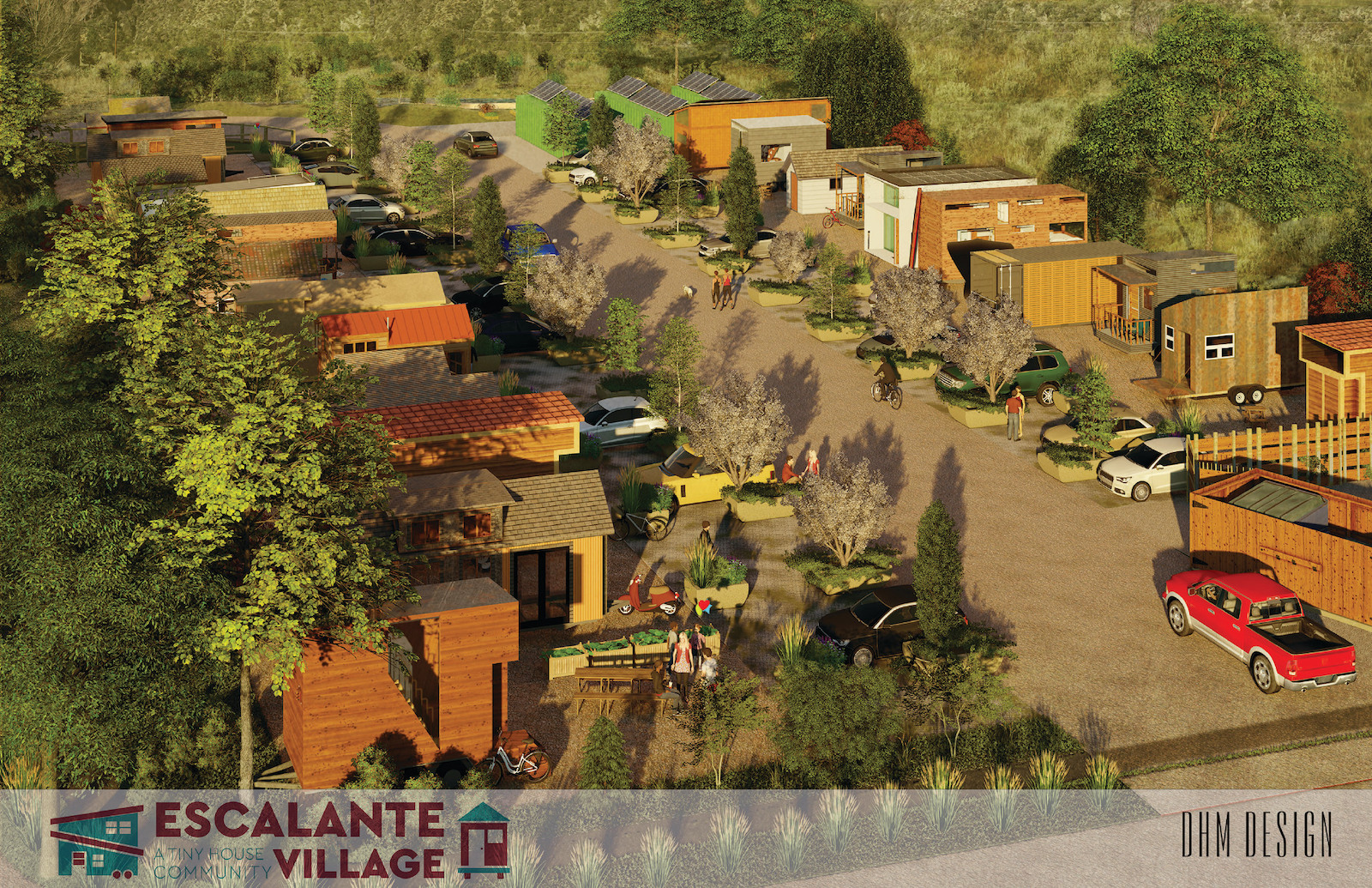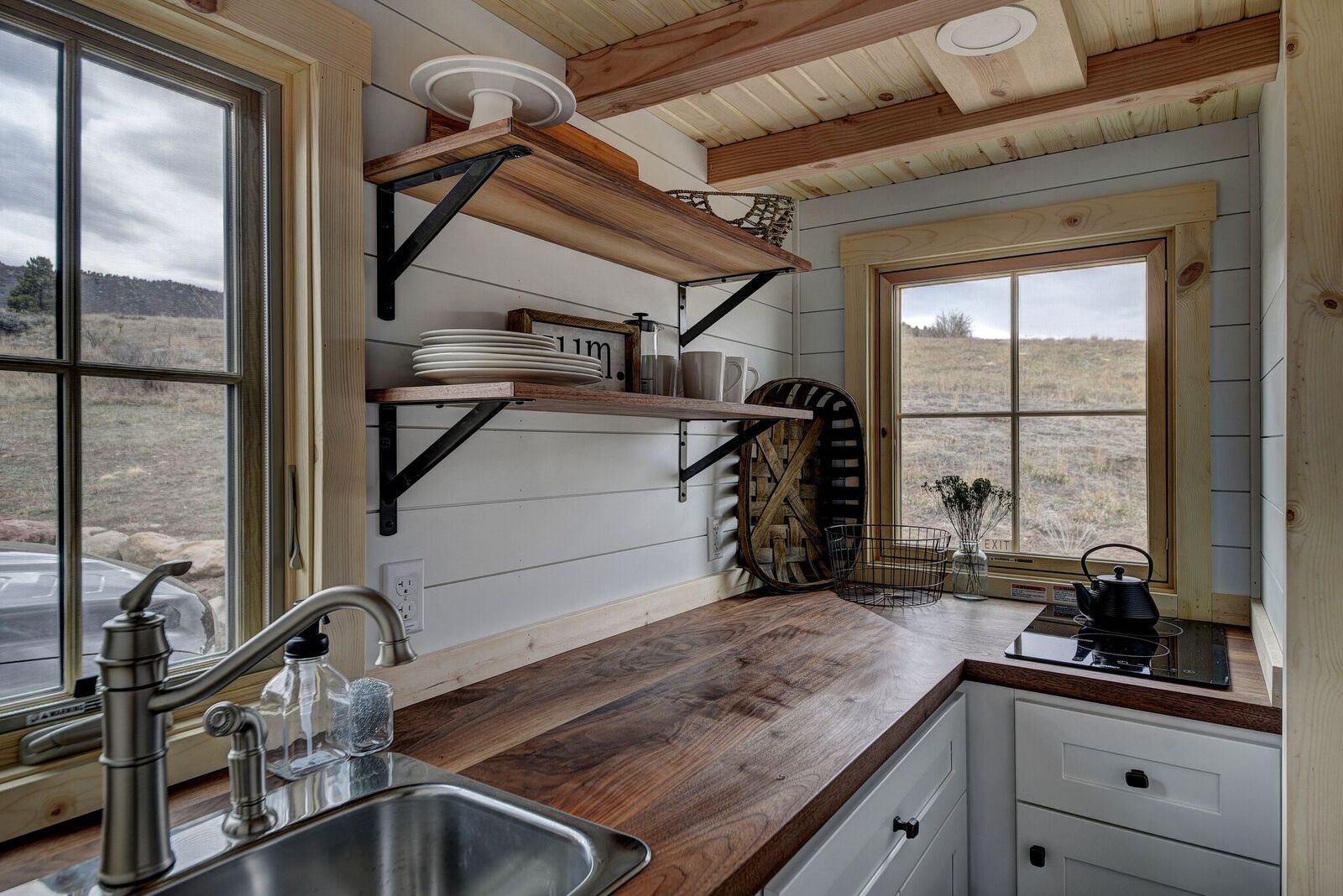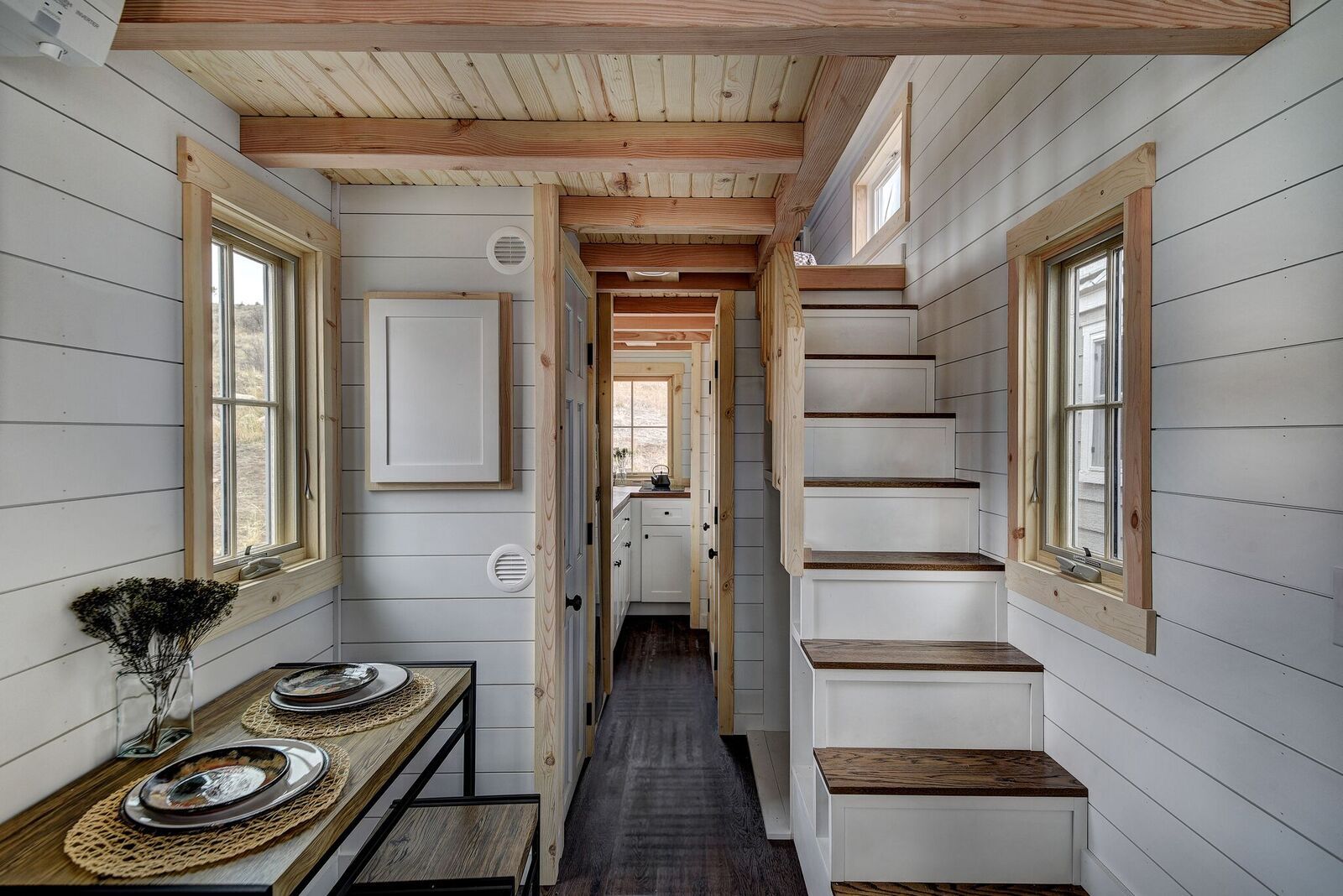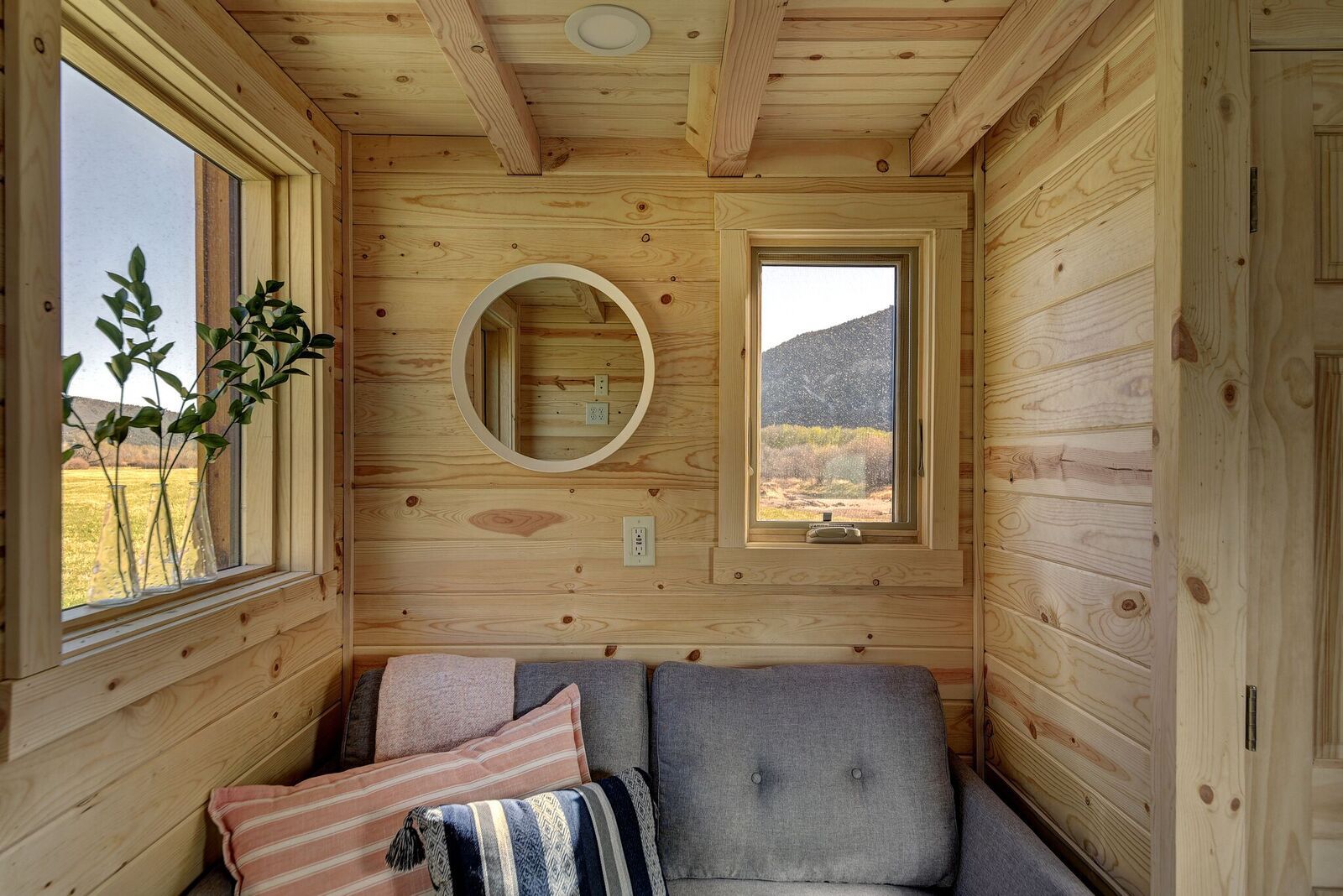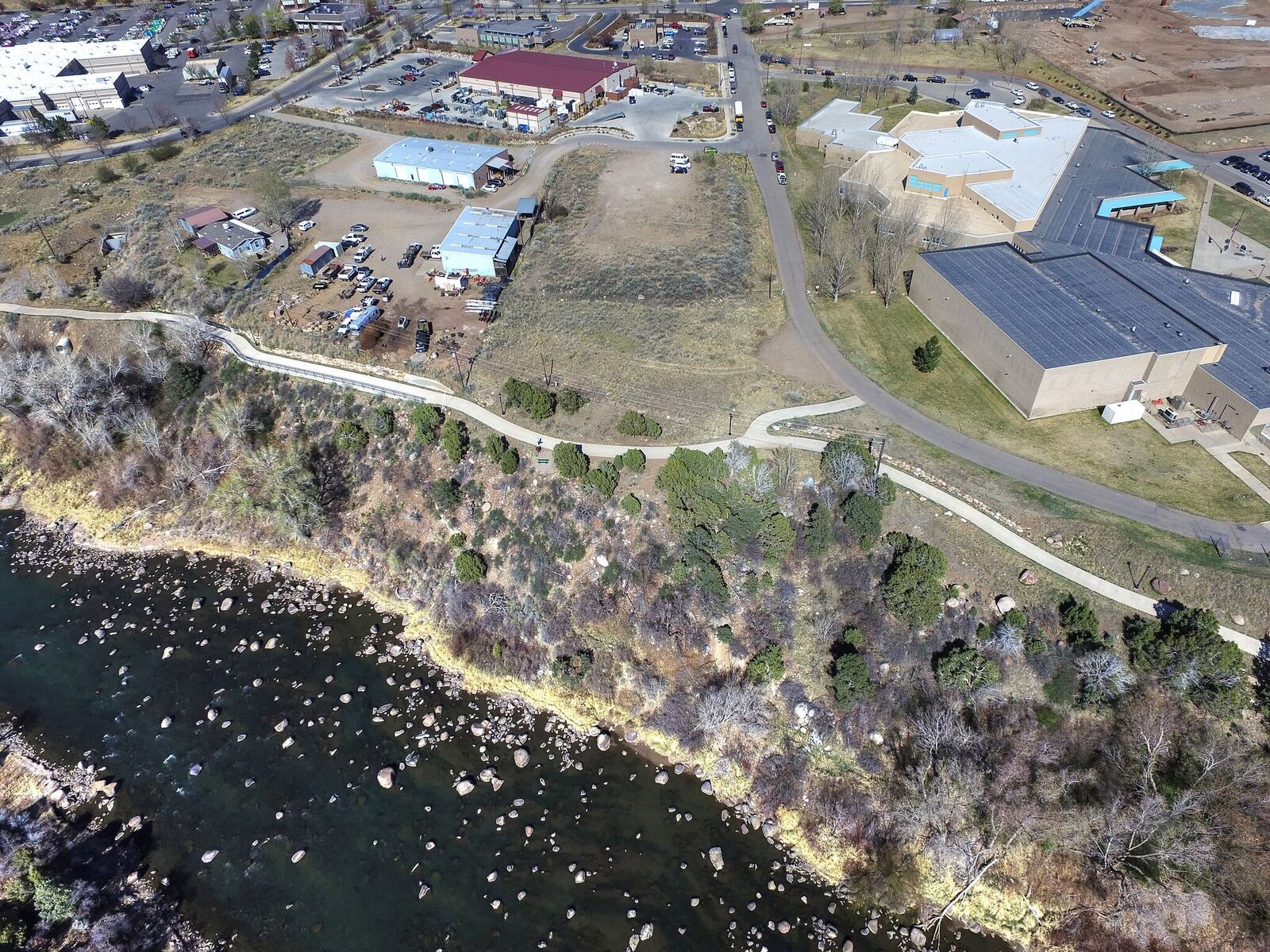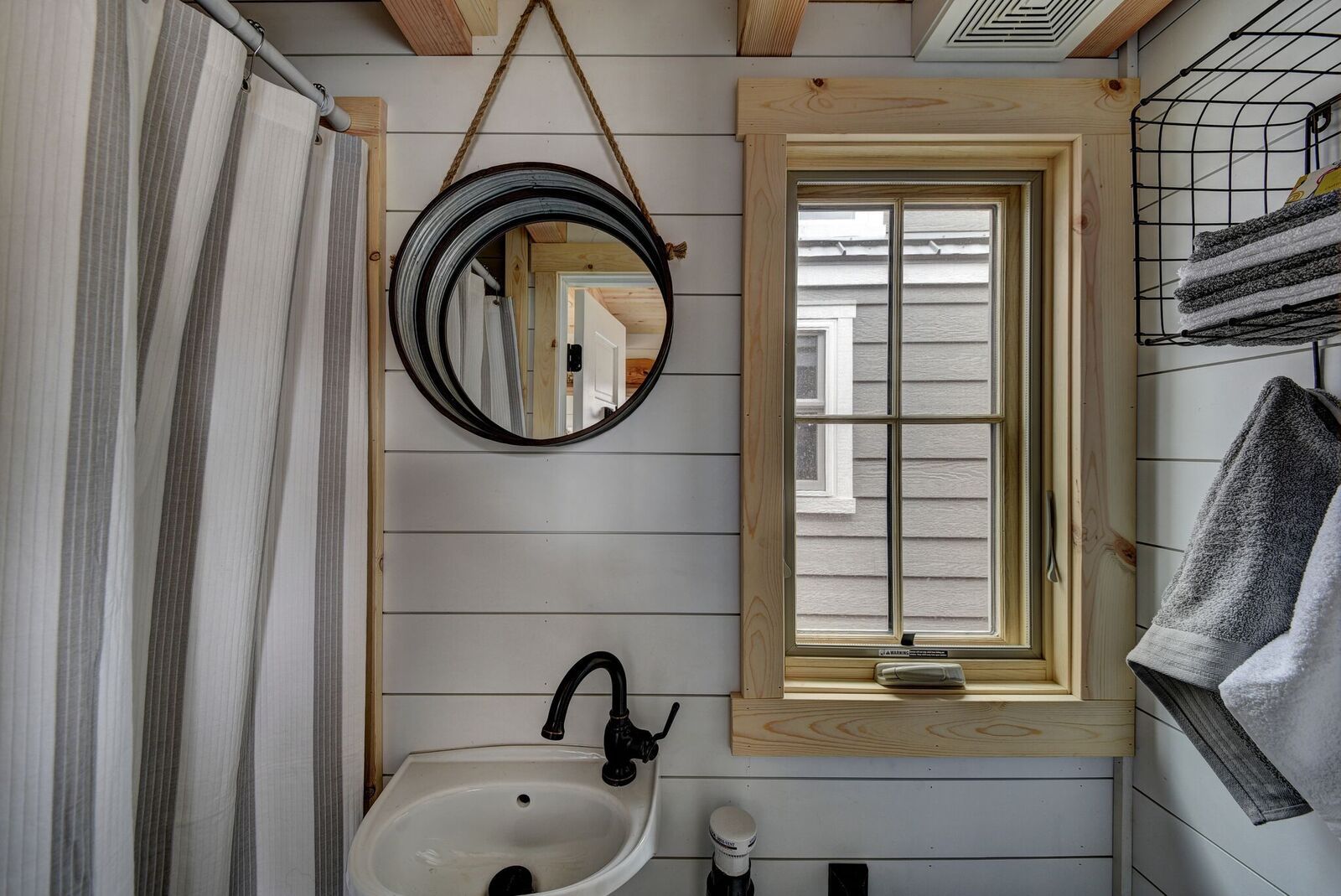The Local newsletter is your free, daily guide to life in Colorado. For locals, by locals.
A winding segment of Durango’s Animas River, a whitewater haven, is now the coveted riverfront site for Colorado’s first-ever tiny home neighborhood. Enter Escalante Village (EV), 22 independent lots for tiny-home dwellers—including six rentable tiny homes—and a surrounding community space that will feature a garden and recreational amenities.
“My goal is for Escalante Village to help people who want a more sustainable lifestyle, so that they don’t need to put as much energy and resources into a home. It’s a community for people who enjoy living with less space and in a more environmentally friendly way,” says developer and land owner Bob Lieb.

Short-term vacation rentals—like Wee Casa resort in Lyons—and stationary small-home developments (with fixed foundations), such as Salida’s River View at Cleora, exist but don’t offer a long-term residency option for tiny homes on wheels. Escalante Village enables residents to cultivate their community and root down for the foreseeable future—with a minimum one-year lease—yet, dwellers maintain the flexibility to move their transportable house to a different location, if needed.
A 41-year Durango local and commercial real estate agent, Lieb had already invested in the property when his idea sparked to build the innovative hub. He was constructing a building on top of a trailer for his at-home Endless Pool, so that he could easily move the workout facility inside an enclosure during winter.
“A collection of tiny homes [is] fun and a great thing rather than building high-price condos,” says the 77-year-old. In October 2017, Lieb attended the Tiny House and Simple Living Jamboree in Austin, Texas. His inspiration completely took off. “I immersed myself with how tiny homes are built—I was fascinated and impressed with people’s creative ability to use very little space yet get a lot of things placed in respect to that space,” Lieb says.
Now, Escalante Village is one of the only longterm tiny-home communities in the nation. “To qualify as a tiny home village there are parameters: the location is within city limits, is 100-percent tiny-home living—no RVs or mobile homes—and it’s full-time, so there aren’t any nightly rentals,” Lieb explains.
Escalante Village is partitioned into 20- by 40-foot lots (an average tiny home is 8- by 26-feet), which allows space for a patio, storage, and two vehicles, or a personal garden. The acreage stands on the south end of town, west of Escalante Middle School, and overlooks a striking maroon-toned rock band that gradually slants toward the sky like a crocodile lifting its head; the McDermott Formation, colloquially known as the Purple Cliffs, is 66 million years old. Speckled by piñon trees, the landscape is a stunning sight.
Despite the competitive views and location, the 2.6-acre tiny-home hive offers a solution for the perennial issue of affordable housing. The median cost for a home in Durango—population 18,000—reached more than $430,000. Leasing land at Escalante Village to park a tiny home is $500 per month. For non-home owners, renting a tiny home is an additional $500-$750 per month. Pending final paperwork—such as the drainage study—and completion of the property development, Lieb anticipates an inaugural move-in date for tenants of April 2019.
“My vision is that we will have a community of people who are residents—not visitors—and will live there as a neighborhood with a mix of different people who look after each other,” Lieb says. “But here, the common thread is that they live in a tiny house.”
Interested in downsizing in Durango? You’re in luck: At time of publication, five spaces (tiny home not included) are still available.




